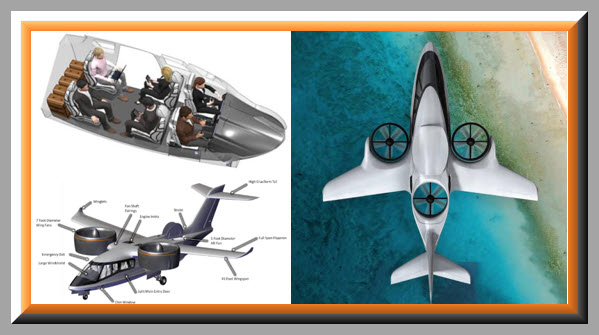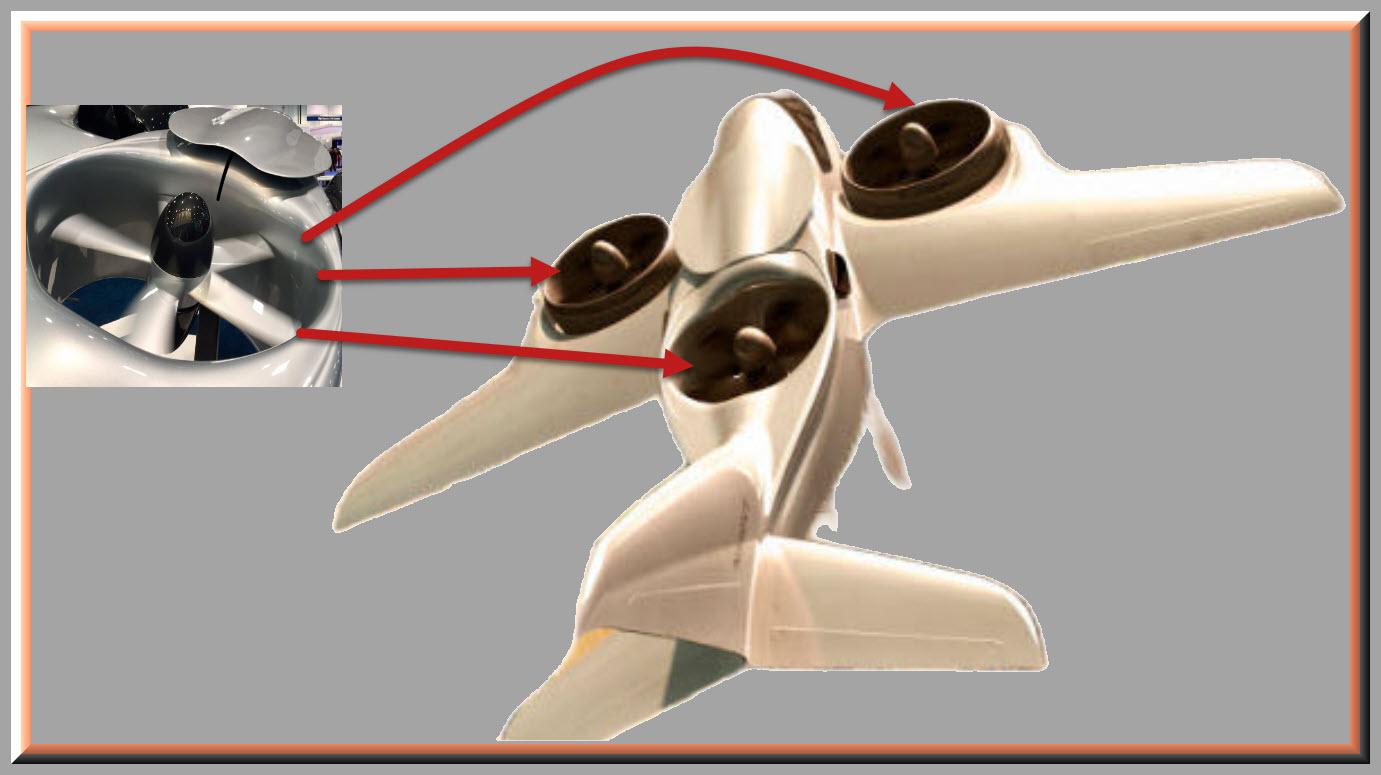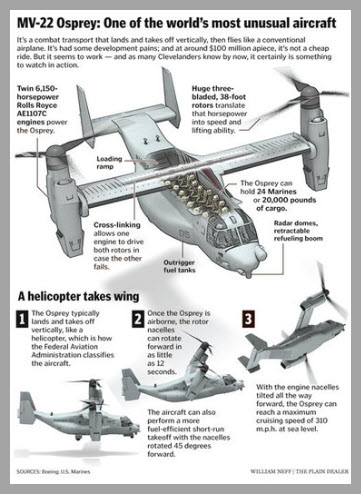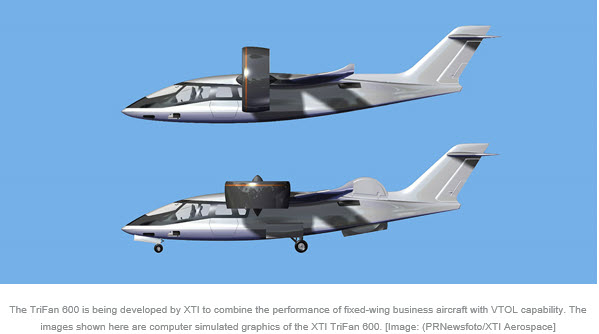A new aviation innovation tests the FAA TC

Aviation is experiencing a sustained period of new technologies (drones, autonomous flight, SAFT, Battery/Lithium power, eVTOL, to name a few) that are all challenging the FAA’s certification competence. But the application of innovation to proven technology provides another test to the agency’s safety mission. Hybrid Airships have added new lift-adding configuration, novel application of thrust, state-of-the-art structural materials and improved navigation to the Type Certification menu.
Dallas Innovates introduces us to another iteration of this old-meets-new theme. Here, two companies are applying an innovative ducted coaxial rotor design trifan for vertical and horizontal flight to a more standard fuselage. TheTexas and Colorado entrepreneurs envision this VTOL aircraft as serving longer range missions like medevac, rescue, Part 91 business, Part 135 charter service, and Part 121 scheduled service operations.

Unfortunately, many questions have been raised by the press about the OSPREY’s tiltrotor’s safety and reliability. After months of investigation by the Pentagon’s Joint Safety Council and relevant services of the US as well as Japan, the DOD answer was “(t)he official, who said the mechanical failure had been identified, declined to say what the failure was.” The best that the anonymous sources would say is that the air and ground crews will have to “put increased attention on its proprotor gearbox, instituted new limitations on how it can be flown and added maintenance inspections and requirements that gave them confidence it could safely return to flight.’

The perception in Washington is that the airworthiness of these aircraft is suspect. While clear the two aircraft appear to be based on different designs (primarily the TriFan’s ducted coaxial rotor design trifan which is integral to the wings and fuselage) different from the V-22’s, the perception may raise the level of scrutiny by the FAA of the XTI/AVX TriFan. Guidance through the FAA TC Labyrinth may be advisable.

+++++++++++++++++++++
Fort Worth’s AVX Aircraft To Help Advance Development of Vertical Lift Crossover Airplane
AVX Aircraft says it was founded with a vision of “bringing advanced vertical lift solutions to the civilian aircraft market.” Now it will leverage its vertical lift tech expertise to advance development of ATI Aircraft’s TriFan 600 VTOL airplane—which aims to perform everything from charter flights to medevac rescues.

BY DAVID SEELEY • JUN 4, 2024
Colorado-based XTI[1] Aircraft has signed a Letter of Intent with Fort Worth’s AVX Aircraft Company—a leader in advanced vertical lift solutions—to provide development, design, and certification services to support XTI’s proprietary and patented TriFan 600.

The TriFan 600, seen above, is a fixed-wing aircraft with vertical takeoff and landing (VTOL) capability. The vertical lift crossover airplane “is expected to revolutionize point-to-point air travel by combining the comfort, speed, and range of similar size conventional business aircraft with the flexibility, convenience, and pinpoint transportation ONLY ACHIEVABLE WITH A VERTICAL TAKEOFF AND LANDING AIRCRAFT,” XTI said.

Leveraging AVX’s ‘seasoned engineering talent’ in vertical lift technology
SCOTT POMEROY[2], chairman and CEO XTI’s Nasdaq-listed parent company, XTI Aerospace, said the agreement “provides XTI Aircraft with seasoned engineering talent and a company highly experienced in designing and developing vertical lift aircraft technology.”
“AVX will help refine our current design, which we expect will accelerate the TriFan 600 development program while significantly reducing expenses for certain engineering capabilities and services,” Pomeroy added in a statement.

Under the agreement, XTI Aircraft, led by XTI Aerospace SVP of Business and Program Development DON PURDY[3], will provide management, direction, and oversight of the TriFan 600 program, XTI said. AVX will become the prime contractor “including DETAILED DESIGN, PROGRAM MANAGEMENT, SUBCONTRACT MANAGEMENT AND CERTIFICATION SUPPORT SERVICES.”
“The AVX team is delighted to work with XTI on this development program and apply our decades of rotorcraft engineering experience to the TriFan 600,” AVX President[4] KENDALL GOODMAN said in a statement. “We look forward to working hand-in-hand with the XTI leadership team to deliver this market-driven solution for their customers.”
Use cases from charter services to medevac and rescue
XTI’s Purdy said there are numerous use cases for the TriFan 600 “within the Part 91 business, Part 135 charter service, and Part 121 scheduled service operations, in addition to special mission roles such as medevac and rescue, where time is so critical.”
“We look forward to working closely with AVX in the coming months,” Purdy added.
AVX was founded with a VTOL vision for civilian aircraft
Fort Worth’s AVX Aircraft “was founded with a vision of bringing advanced vertical lift solutions to the civilian aircraft market,” the company says. In 2010, AVX began applying its “UNIQUE PATENTED COAXIAL ROTOR DESIGN TECHNOLOGY[5]” to the military marketplace, refining and maturing the technology as it competed in “numerous” U.S. military aircraft development programs.
AVX later expanded its Unmanned Air Vehicle designs and other engineering services for commercial and military applications under its current ongoing series of contracts with the U.S. military, the company added.
[1] eXtended Technology and Innovation
[2] Scott Pomeroy is the Chief Executive Officer of XTI Aerospace. Mr. Pomeroy brings over 35 years of executive experience. He previously served as the CFO of Dex Media, overseeing equity and debt capital raises of more than $10 billion, and was CEO and founder of Local Insight Media. He also co-founded Gen3 Financial Services, a boutique merchant bank providing capital raising and business advisory services to clients in a variety of industries including aerospace. He has served on several Boards, including the Board of Directors of AVX Aircraft Company since 2009, a U.S. military defense contractor and a leading-edge aviation research and engineering company with particular expertise in Vertical Takeoff and Landing (VTOL) aircraft and unmanned aircraft development. He began his career at KPMG Peat Marwick. He has a BBA in Accounting and is a Certified Public Accountant.
[3] Don has over 36 years of business leadership experience within Fortune 500 and start-up businesses. During the first 27 years of his career, Don held senior leadership positions at Honeywell and Rockwell Collins in the areas of marketing, business development, operations, strategy development, and M&A for the commercial aerospace sector. While the business development director for the Boeing, Bombardier, and Cessna-Beechcraft strategic accounts his pursuit teams captured over $2.0B in new aircraft forward-fit positions. Over the last decade, Don has provided business, strategy and financial support for a number of start-up businesses in the aerospace, real estate, film/entertainment and healthcare sectors. Don holds an MBA from the University of Iowa and a BS in Computer Engineering from Baylor University.
[4] Mr. Goodman has held a wide range of positions in the aerospace industry including Engineering, Research and Development, Program Management and Executive Leadership over the past 30 years. Kendall has led teams in the development of advanced aircraft designs including helicopter and tilt rotor configurations. He has been awarded six U.S. Patents.
[5] AVX Aircraft’s soft-in-plane rotor delivers unprecedented lift performance. This design is uniquely scalable with application on both manned and unmanned aircraft. Our COAX design results in 15% greater payload and elimination of a tail rotor increases aircraft reliability and safety. Our customers continue to depend on AVX to develop new rotor and hub technologies and to improve on fielded designs for VTOL aircraft.
